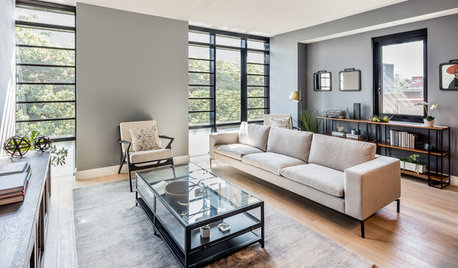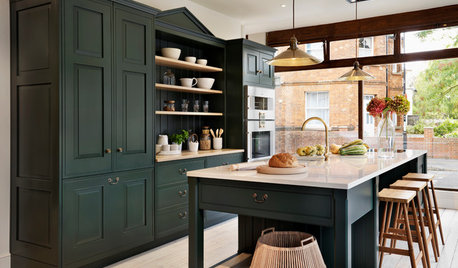Paint / primer / prep question
cearbhaill (zone 6b Eastern Kentucky)
11 years ago
Related Stories

PAINTINGHow to Paint a Room: Prep to Painting
Find out the steps to take for the best results when doing it yourself
Full Story
GREEN BUILDINGConsidering Concrete Floors? 3 Green-Minded Questions to Ask
Learn what’s in your concrete and about sustainability to make a healthy choice for your home and the earth
Full Story
REMODELING GUIDESSurvive Your Home Remodel: 11 Must-Ask Questions
Plan ahead to keep minor hassles from turning into major headaches during an extensive renovation
Full Story
SELLING YOUR HOUSEKitchen Ideas: 8 Ways to Prep for Resale
Some key updates to your kitchen will help you sell your house. Here’s what you need to know
Full Story
EXTERIORSCurb Appeal Feeling a Little Off? Some Questions to Consider
Color, scale, proportion, trim ... 14 things to think about if your exterior is bugging you
Full Story
KITCHEN DESIGN9 Questions to Ask When Planning a Kitchen Pantry
Avoid blunders and get the storage space and layout you need by asking these questions before you begin
Full Story
SELLING YOUR HOUSEFix It or Not? What to Know When Prepping Your Home for Sale
Find out whether a repair is worth making before you put your house on the market
Full Story
LIGHTING5 Questions to Ask for the Best Room Lighting
Get your overhead, task and accent lighting right for decorative beauty, less eyestrain and a focus exactly where you want
Full Story
REMODELING GUIDESConsidering a Fixer-Upper? 15 Questions to Ask First
Learn about the hidden costs and treasures of older homes to avoid budget surprises and accidentally tossing valuable features
Full Story
DOORS5 Questions to Ask Before Installing a Barn Door
Find out whether that barn door you love is the right solution for your space
Full StoryMore Discussions









paintguy22
jessicaml
Related Professionals
Bothell Painters · Alexandria Painters · Champlin Painters · Oceanside Painters · Ypsilanti Painters · Allentown Cabinets & Cabinetry · Christiansburg Cabinets & Cabinetry · Drexel Hill Cabinets & Cabinetry · Ham Lake Cabinets & Cabinetry · Lackawanna Cabinets & Cabinetry · South Riding Cabinets & Cabinetry · Central Cabinets & Cabinetry · Phelan Cabinets & Cabinetry · Lexington Flooring Contractors · Snellville Flooring Contractorscearbhaill (zone 6b Eastern Kentucky)Original Author
Christopher Nelson Wallcovering and Painting
jessicaml